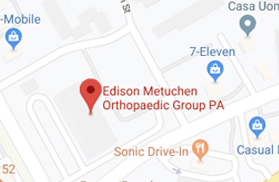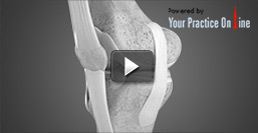Spinal Cord Stimulator
Spinal cord stimulation is used for the management of chronic pain in arms and legs that has not responded to conventional modalities of treatment. Specific segments of the spinal cord are stimulated through electrical signals, generated by a spinal cord stimulator, which may be associated with a slight prickling or tingling sensation.
There are different types of stimulation systems but the most common among them is an internal pulse generator with battery. A SCS system comprises of:
- An implantable pulse generator with battery that generates electrical signals
- A lead with many electrodes which delivers the electrical impulses to the spinal cord
- An extension wire connecting the pulse generator to the lead
- A manually operated remote for adjusting the electrical signals
A spinal cord stimulator (SCS) is surgically implanted in the subcutaneous tissue of the lower back, beneath the skin, and is also known as a dorsal column stimulator. A SCS comprises of a small wire that transmits the electrical signals from a pulse generator to the leads. These signals interrupt the transmission of pain signals from the spinal nerve fibers to the brain, thus relieving the pain. SCS only provides symptomatic relief and does not cure the root cause of pain.
There is inter-individual variation in the extent of pain relief with a SCS. Therefore, before implantation of the permanent device, trial stimulations are performed to evaluate the patient’s response. A SCS provides significant relief in performing routine activities and decreases the requirement for pain medications.
A SCS is effective in the management of chronic pain in the lower extremities or back and also in various other disorders such as sciatica, failed back surgery syndrome, complex regional pain syndrome (CRPS), and arachnoiditis.
Procedure
There are different techniques for the implantation of a spinal cord stimulator. Before implantation of the permanent device, a trial implantation is done by placing the stimulator at the appropriate segment of the spinal cord. In a trial implantation a paddle lead is placed over the spinal cord either by removal of the lamina covering the spinal cord or by percutaneous insertion of the lead through the skin. If there is a significant reduction in the intensity of pain with a trial stimulator, permanent implantation is performed after a few days.
Postoperative care
After the implantation of a spinal cord stimulator you may be discharged on the same day or next day after the procedure. Patients are instructed to keep their wound clean and dry.
Risks
The risk and the complications associated with the procedure are generally low. However, some of the possible risks include bleeding, infection, nerve damage, spinal cord injury, paralysis and death.
Other Spine List
- Normal Anatomy of the Spine
- Back Pain
- Neck Pain
- Spine Trauma
- Vertebral Fractures
- Spine Injections
- Spinal Deformity Surgery
- Posterior Lumbar Decompression with Fusion
- Lumbar Microdiscectomy
- Anterior Cervical Decompression with Fusion
- Corpectomy
- Kyphoplasty
- SI joint fusion
- Oblique Lumbar Interbody Fusion
- Direct Lateral Interbody Fusion
- Interlaminar Lumbar Instrumented Fusion
- Minimal Access Surgical Technology Transforaminal Lumbar Interbody Fusion
- Lumbar Epidural Steroid Injection
- Laminectomy (Cervical) with Fusion
- Posterior Lumbar Interbody Fusion
- Peripheral Nerve Surgery
 Menu
Menu






